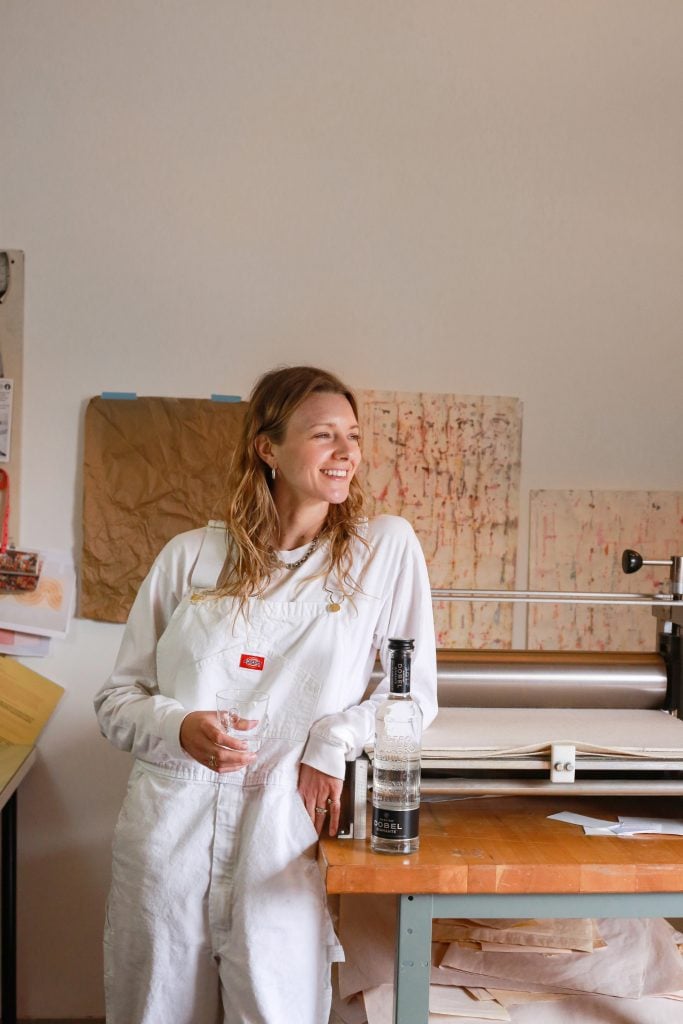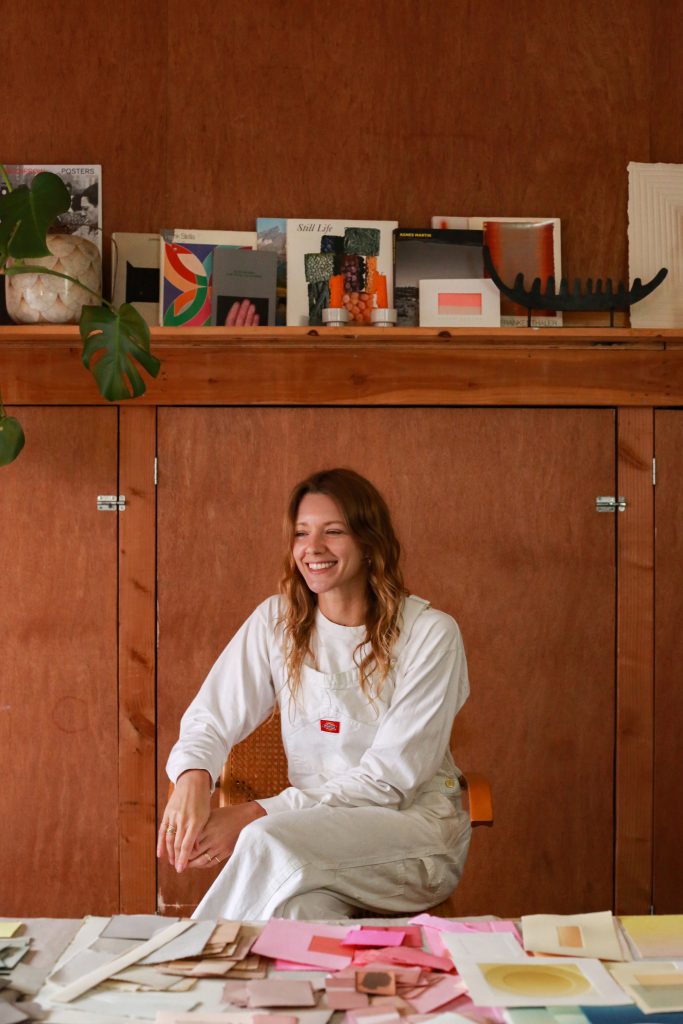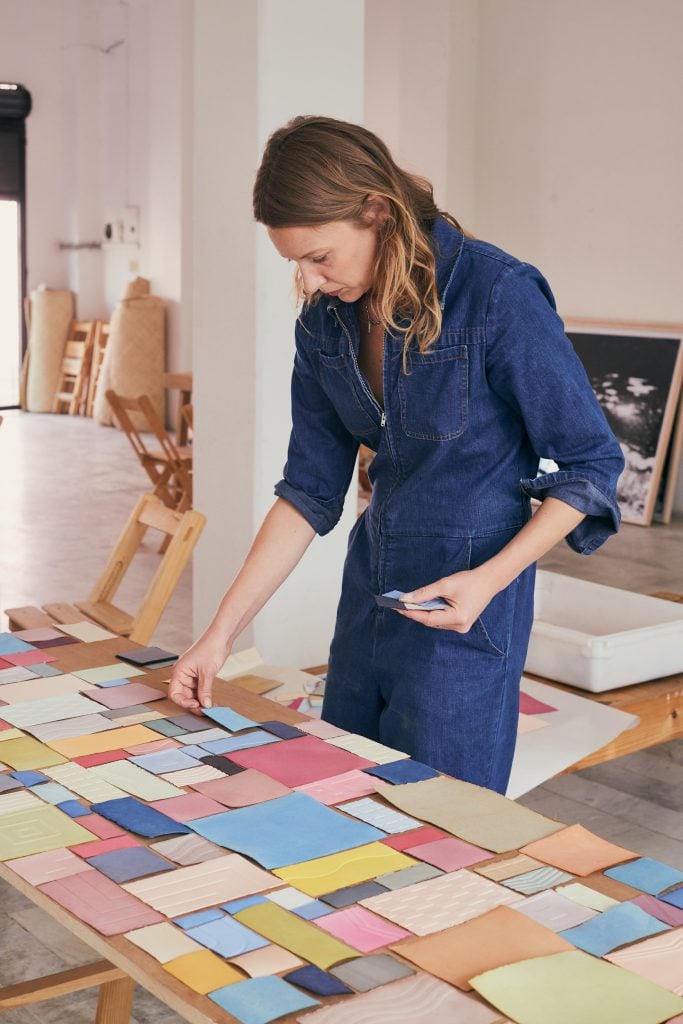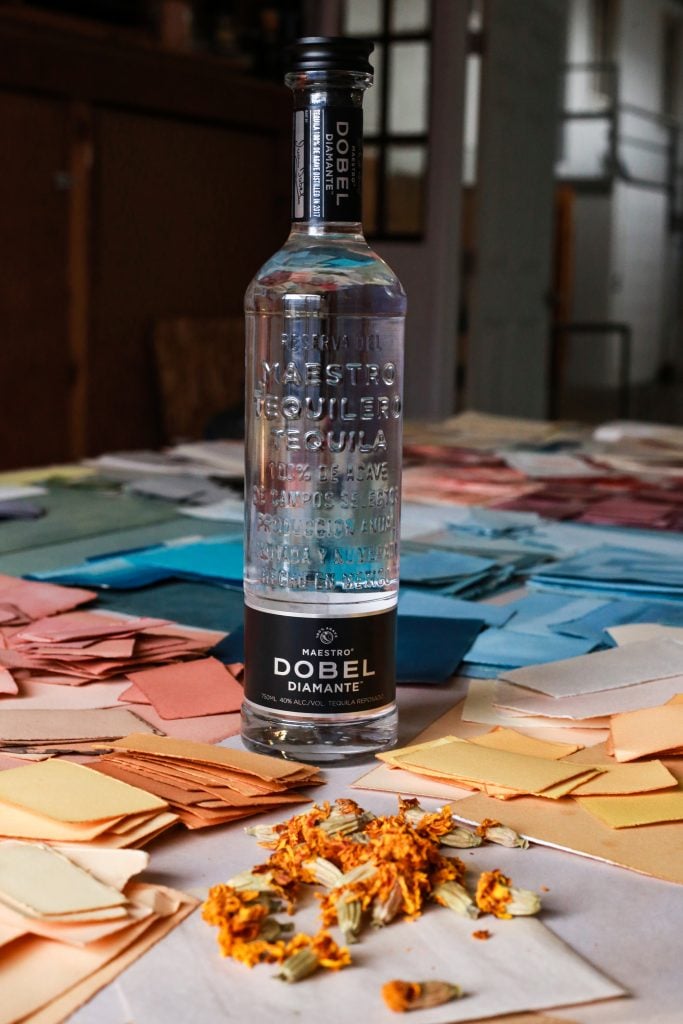People
‘I Left With Lifelong Connections’: What Artist Cheryl Humphreys Learned in Mexico at the Pocoapoco Residency
We spoke with the artist about the memories she'll never forget.

We spoke with the artist about the memories she'll never forget.

In Partnership With Maestro Dobel Tequila

To mark Maestro Dobel Tequila’s sustained support of the arts and cultures of Mexico, Artnet is teaming up with the brand to support the Pocoapoco artists’ residency in the south of the country. In celebration of the residency’s ethos of intelligent innovation, and its drive to uphold and transform tradition, the spirit-maker will make a donation to assist its operations. This interview is part of a series of three with artists who have passed through the program.
Cheryl Humphreys, the Los Angeles-based printmaker whose work focuses on healing and meditation, came to the Pocoapoco residency in Mexico without expectations.
“I came to Oaxaca with curiosity,” says the artist, who trained as a graphic designer and is the cofounder of the Arms Studio, a design and fine-art house. She had no specific goals in mind, and instead wanted to soak up the many influences of the country’s diverse cultures.
“My time in Mexico really opened my mind to the possibilities of color, nurtured my curiosity about natural dyes, and inspired me to be more resourceful with the way I print,” she says. “It slowed me down and allowed me to look at my practice from a different perspective.”
We spoke with the artist about how her approach to printmaking evolved while she was in Mexico, which collaborative projects at the residency were most formative, and what she learned from local craftspeople.

Artist Cheryl Humphreys. Photography by Stephen Archer.
What led you to the residency at Pocoapoco? What interested you about Mexico?
A dear friend inspired me by sharing her experience at Pocoapoco. She encouraged me to apply. I believe her exact words were: “You gotta do it, Cher. It’s going to crack your heart wide open.” And she was absolutely right.
As a printmaker, I was interested in Oaxaca specifically, because it is known for its printmaking community. I didn’t realize just how expansive it was going to be. Walking through the streets, it felt like there was a printshop every other door I passed. I couldn’t believe it.
A longtime mentor of mine (and master printer here in Los Angeles) had been encouraging me to go to Oaxaca for years. He would tell me about the beautiful handmade papers I would find, the print shops I could work in, and even gave me [Mexican Zapotec artist] Francisco Toledo’s cell phone number before I left… This made me laugh. I was never going to try calling it, but the gesture indicated how warm and welcoming the city I was about to visit would be.
Was there a particular aspect of your craft that you wanted to refine while at the residency?
For me, it was less about refining any part of my craft and more about exploring the craft and culture of Oaxaca. One of my favorite days was a trip to Teotitlán del Valle, where we visited a family-owned rug [weaver], Casa Don Taurino. I was invited to spend the day there and witness how they create and use natural dyes for their wool. Veronica of Casa Don Taurino, and Angie, an artist, together created huge vats of dye heated up over open flames. They made a beautiful golden yellow with wild marigold, and a soft magenta with sun-dried cochineal. They made room for me to drop some paper tiles into the colors. I felt like I was being let in on a family secret.

Artist Cheryl Humphreys during her residency at Pocoapoco. Image courtesy Cheryl Humphreys.
Were there any aspects of the residency that were especially surprising to you?
I was surprised by the relationships formed and the strong sense of community I immediately felt. All of the women that work with Pocoapoco are artists themselves, so when you brought up a town you wanted to visit or a craft you wanted to learn more about, there was a chance that one of them was already going or could help you find what you were looking for. I left with lifelong connections and a certainty that I’d be back.
In what ways did your work change as a result of the residency experience?
Prior to arriving in Mexico, [Pocoapoco founder and director] Jess [Chrastil] had reached out to me about hosting a workshop during my stay. The workshop would be open to the local community, as well as the other residents. We called it Taller de Collage, and the idea was to provide small, colorful, embossed paper tiles for participants to create their own works of art with. These tiles were the perfect vehicle for me to try all the things I had come to Oaxaca to explore: natural dyes, various handmade papers, and different embossing techniques.
The night of the workshop, I flooded the table tops of [the residency’s gallery] La Señora with these experiments. The result was quilt-like and colorful and told the stories of my exploration and experiences in Oaxaca. I fell in love with the process of putting one tile next to the other. What felt like seconds later, the “installation” was completely deconstructed. Everyone pulled the colors and shapes that spoke to them to create their compositions. It was an excellent practice in making and then letting go, something I have brought into the studio with me this year.

Maestro Dobel Diamante, the world’s first-ever Cristalino tequila. Photography by Stephen Archer.
Were there any artists you were exposed to during your stay that were especially interesting to you?
Two artists that come to mind immediately are Marco Velasco and Phebe Macrae Corcoran, a lovely couple that have a print shop in town, Espacio Pino Suárez. Phebe was in school at the time and was working on these massive cyanotypes inspired by Robert Rauschenberg’s blueprints from the 1950s. They were remarkable! Marco shared with me an ongoing series of works based on things we sit on, ranging from mini-sculptures of chairs to prints of toilet seats. I printed all the paper tiles for the workshop in their space and was lucky enough to spend intimate time with them, connecting about art, sharing mezcal, and exchanging print techniques.
How would you describe the legacy of the Pocoapoco residency?
I imagine Pocoapoco will continue to crack open the hearts of artists from all over the world time and time again. Oaxaca is such a special place and we have so much to learn from its traditions, its artists, its way of life, and its connection to the land.
What advice would you give to future artist residents coming to Pocoapoco?
Come with an open mind and an open heart.